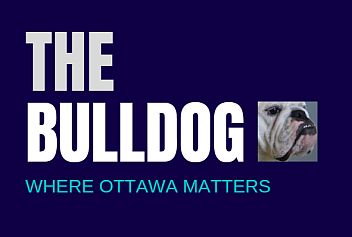Engage Ottawa Is City Propaganda: POTTER
By Evan Potter:
Engage Ottawa isn’t the democratic exercise it maintains it is.
The usual intent of public exercises such as Engage Ottawa on Lansdowne 2.0 is to ensure that Ottawa City Hall is democratic in its decision-making because it is listening to residents. The reality is that such engagement has become firmly part of city strategic corporate communications. The Engage Ottawa process falls within the responsibilities of the city’s chief communication officer.
Once the public engagement function becomes part of an organization’s strategic communications, we can expect that the focus will shift to using engagement (online and offline) to shape public opinion.
So on an issue (especially a controversial one like Lansdowne), the purpose is not to have a meaningful exchange with citizens that could lead to changes in the project’s outcome. The public engagement is designed to make sure that its results (for example responses on public surveys) do not threaten your organization’s ability to achieve its predetermined objectives.
When public engagement, as in Engage Ottawa, is incorporated into an organization’s strategic communications, certain questions are not put on Engage Ottawa surveys because they could result in an inconvenient response that would undermine the city’s preferred framing of Lansdowne 2.0.
For instance, if you had asked citizens on the Engage Ottawa Lansdowne Survey if they were willing to pay a one-per-cent increase in their property taxes to pay for Lansdowne, you would have generated a negative response (typical of questions asking respondents about taxes). Such a negative response would likely have been seized upon by the media with headlines to reflect low support for Lansdowne 2.0. Clearly, when you approach public engagement with a strategic communication mindset, you do not want to generate this type of headline.
Moreover, such a headline would have been upsetting to the Ottawa Sports and Entertainment Group as your partner in the public private partnership. So, from a strategic communications perspective, you make sure that such questions do not appear on the survey to ensure that the inconvenient answer doesn’t emerge and cause problems in public perception.
The same goes with making sure that there were no questions designed to give the public a chance to propose alternative models to OSEG’s Lansdowne 2.0.
The stated reason for this from city officials was that Ottawa City Council gave direction that there was only one model being considered and therefore it was not necessary to ask the public to consider any other models. This is how city hall used Engage Ottawa to try to shape public views on Lansdowne 2.0. Without certain questions on the survey, you quell relevant public discussion (i.e., why would council not consider any other model except the one being proposed by OSEG?).
Having a public discussion, including in the media, about the need to compare the OSEG model with other models to revitalize Lansdowne was clearly unwelcome to both OSEG and the city. In the end, the Engage Ottawa platform for controversial public policy issues is managed to ensure that it becomes a one-way (city hall to the public) form of information-sharing.
In other words, the city tells the public what it intends to do and invites some comments. These comments are then played back to the public in “What we heard” documents posted to the website. This is then played up by the city as conforming to its best practices of listening to the public.
But, if what the city heard is fundamentally at odds with what was being proposed by the city as its objective, then these public comments are likely to be ignored and will have no effect on the final outcome.
The Engage Ottawa process is carefully designed in this way: The city can say it listened (coffee talks, zoom meetings, public presentations etc.) while knowing that the engagement will not fundamentally alter the desired outcome of Lansdowne 2.0.
That’s why Engage Ottawa is strategic communication to shape public acceptance of the city’s preferred outcomes and not genuine and meaningful public engagement. The city’s Engage Ottawa on Lansdowne 2.0 ticks all the boxes as strategic communication rather than genuine public engagement to reduce the democratic deficit at the local level.
That’s the way it was designed.
It achieved its purpose.
Evan Potter is an Associate Professor in the Department of Communication at the University of Ottawa. His research interests include public diplomacy, government communications, and strategic communication in a military context.
For You:
70% Of Ottawns Feel Ignored On Lansdowne: City Survey
Bullets Fly At Lansdowne Park: PATTON
LANSDOWNE: Watson Must Be Ecstatic: THE VOTER




This aligns with my first hand experience dealing with Engage Ottawa. So disappointing.
@Evan, what’s the organizational solution here. Separate divisions for consultation and communications at City Hall?
Spot on, Evan Potter! I have been uncomfortable with the methods used but had not cottoned on to the the structural foundation of the City’s engagement program. Thank you!
Potter’s analysis of Engagement Ottawa’s manipulative, and that is exactly what it is, in pervasive throughout city hall’s culture. It is not limited to Lansdowne 2.0.
This analysis leads me to think of how traders misused/deceived the stock markets and eventually were caught and penalized. It seems that city councils and mayors are exempt from the court proceedings much like Trump is trying to claim executive privilege and immunity for his actions. Is this what democracy and good civic government has become in Canada?
I tried my best to follow the Lansdowne 2.0 virtual consultation sessions. Most of these talked about the public realm, views of the heritage buildings, height of the podium, roof on the arena and that sort of thing. We heard from heritage people and architects. Although many questions were asked about financials, little information was given, and few details presented on the stadium or arena except the seating. The last session on Lansdowne 2.0 was early in September and was essentially a repeat of a previous one. Then on the Friday of Thanksgiving weekend a month later, the city dropped a significant information package on a quite different Lansdowne 2.1 proposal. Without any public consultation it was passed through council in two months. So in fact the city provided no public consultation on Lansdowne 2.1. But as things seem to evolve here, Lansdowne 2.1 has inherited the name Lansdowne 2.0, although it is not the Lansdowne 2.0 proposal that was presented in consultations. It felt a bit like a bait and switch process.
I see that Mr Potter is an Associate Prof at the U of O. At first I wasn’t sure who he was, i.e whether he worked for city hall and if so, in what capacity. I believe what he has noted in his brief is likely an excerpt from the Spin 101 program.
Evan,
Thanks so much for flagging this! Corporate, strategic, communications is not the same as public engagement, what a concept!
The department managing both is ‘Public Information & Media Relations’ There’s nothing in there about ‘engagement’.
I’ll join Neil in asking ‘what’s the solution?’
John,
Thanks for bringing this up – with detail. I had wondered what had happened to Lansdowne 2.1 and now see that I was baited and switched. I’ll start referring to the current version as ‘2.1’ until we get to the next unconsulted major change.
Bullseye